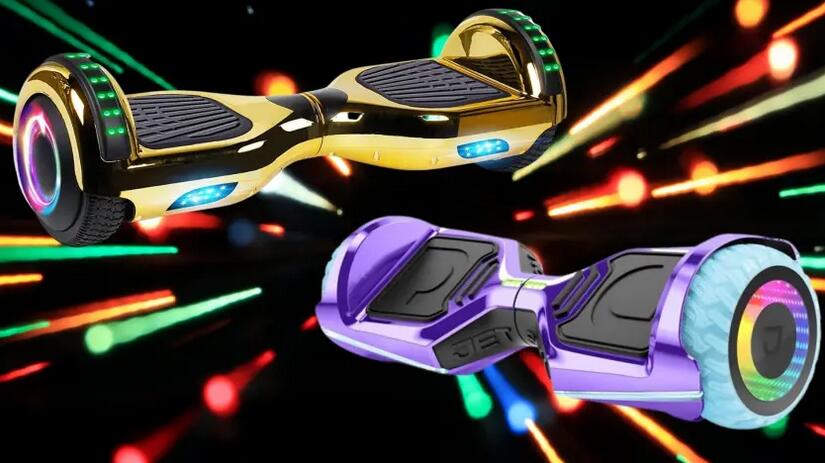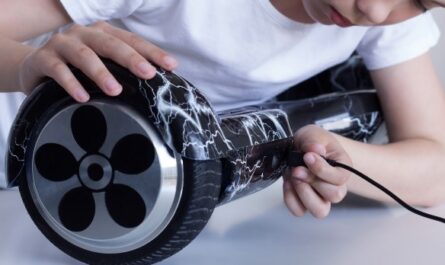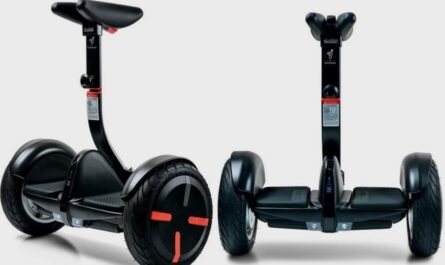Hoverboards exploded onto the tech scene in 2015 as the hottest new gadget and transportation trend. Seemingly overnight, these futuristic-looking self-balancing scooters were everywhere – celebrities zipped around on them, people of all ages glided down busy sidewalks, and funky YouTube videos showed hoverboard stunts and fails. Hoverboards became a pop culture phenomenon and a must-have tech toy almost instantly. But where did these fascinating devices come from? When were hoverboards invented? Let’s take an in-depth journey through the rapid evolution of this groundbreaking mobility technology.
Table of Contents
The Early Origins of Hover Technology: 1950s-1960s
Before hoverboards, engineers were experimenting with how to make all kinds of things hover and float off the ground. The first real breakthrough came in the 1950s when British inventor Christopher Cockerell developed the hovercraft – a vehicle that could glide just above land or water on a cushion of air.
In the 1960s and 70s, vertical take-off and landing (VTOL) aircraft like helicopters and Harrier jump jets took flight. These amazing machines could not only hover, but also fly forward, backward, and laterally in midair. Sci-fi writers had long envisioned futuristic worlds where vehicles smoothly hovered and darted about through the air. These early real-world hovering contraptions fueled inventors’ imaginations about what could be possible in personal transportation.
Several experimental “hoverbike” prototypes were built during this period. Though not practical, they demonstrated the potential of applying hover technology to smaller recreational devices. Some of the quirky early attempts included:
- Hiller Flying Platform – Created by Stanley Hiller in 1954. It consisted of two open propellers attached to a platform that a person could stand on.
- De Lackner Aerocycle – Developed by De Lackner in 1961. The rider sat underneath an overhead rotor, hovering about 2 feet off the ground.
- Williams Aerial Platform – Built in 1969. Similar to a flying carpet, with four engines on a flat platform.
While fun novelty items, these initial hoverbike inventions were limited by short battery life, unstable controls, and lack of safety features. Still, they indicated an interest in applying emerging hover technology to personal transporters.
The First True Hoverboard Prototype Emerged in 2014
Fast forward several decades to 2013, when the first patent emerged for a self-balancing personal transporter that closely resembled the hoverboards of today. This patent was filed by Chinese entrepreneur Shane Chen. Chen had founded Inventist Inc., a company focused on mobility devices.
Chen’s design used gyroscopes and accelerometers to stay upright. Electric motors provided forward propulsion. He developed a prototype in 2014 and unveiled it at a trade show in China under the name Hovertrax. This device offered a glimpse of the self-balancing, electric-powered hoverboards that would soon take the world by storm.
However, the initial Hovertrax still had some limitations, like a battery life of only one hour and software issues. But this marked a major milestone as the first functional hoverboard capable of supporting a rider’s weight while autonomously balancing.
| Hover Device | Inventor | Year |
|---|---|---|
| Hiller Flying Platform | Hiller Aircraft | 1954 |
| De Lackner Aerocycle | De Lackner | 1961 |
| Hovertrax | Shane Chen | 2014 |
Chen’s Hovertrax provided a foundation for the hoverboard market soon to emerge. It demonstrated the viability of self-balancing technology and spurred others to build upon this breakthrough.
Hoverboards Go Viral: The Pop Culture Craze of 2015
After improvements to Chen’s original patented design, 2015 was the year that hoverboards went truly mainstream. New companies entered the market, mass-producing self-balancing scooters at affordable price points ranging from $300-$500.
Videos went viral of celebrities like Justin Bieber effortlessly zipping around on hoverboards. Their popularity surged among kids, teens, and college students. The devices became a common sight in cities, campuses, shopping malls, and anywhere people wanted to cruise around and have fun. Hoverboard riders often drew stares and questions from curious onlookers intrigued by the cool new gadgets.
Sales skyrocketed during the 2015 holiday season, with estimates of over 3.5 million hoverboards sold just in the US market that year. Major companies like Razor, Swagway, and PhunkeeDuk cashed in on the self-balancing scooter craze. Some brands differentiated with unique features like Bluetooth speakers or flashy LED lights. Celebrity endorsements and prominent media coverage fueled interest.
The iconic hoverboard scene from Back to the Future 2 had become a reality. These futuristic-looking devices captivated the public’s imagination. Their surge into the mainstream consumer tech market was emblematic of 2015’s technology and transportation trends.
The Controversy Rises: Hoverboard Safety Under Scrutiny
This massive spike in demand also spawned some serious problems. With so many low-cost hoverboards hitting the market, issues emerged regarding quality control and safety. The devices grew infamous for catching fire, exploding, or smoking when batteries overheated.
Throughout 2016 and into 2017, alarming stories circulated about hoverboards spontaneously combusting while charging or in use. At least 60 fires were reported in 24 different states related to faulty hoverboard batteries. There were even incidents of houses burning down.
In response, airlines banned hoverboards from flights over safety concerns. Colleges and public areas prohibited their use. The Consumer Product Safety Commission investigated the risks, which resulted in the recall of over 500,000 hoverboard units and new safety requirements.
These troubles caused a sharp drop in sales. But the devices were not disappearing entirely. Amid the controversy, more reputable brands emerged determined to develop safer and higher-quality hoverboards. This tumultuous period shed light on the need for proper engineering, manufacturing standards, and safety vetting.
Pick Your Ride: The Evolution of Hoverboard Designs
As hoverboard companies learned from early missteps, the technology continued advancing rapidly. By 2016-2017, many models hit the market with new features and improved performance.
Companies like Segway and SWAGTRON implemented battery management systems and used higher quality materials less prone to overheating. New designs emphasized safety as a priority. This helped bring hoverboards back from the brink after the controversy.
Drive systems were upgraded to be more powerful while also efficient. Battery capacities grew to allow over 15 miles of range versus the 5 miles of early boards. Maximum speeds increased from 6-7 mph to over 10 mph. Solid rubber tires replaced cheaper plastic wheels. Some boards added handy extras like Bluetooth speakers to play music on the go.
The most cutting-edge design shift was the development of all-terrain, off-road capable hoverboards. Using treaded tires and more robust motor power, these could handle grass, gravel, slopes, and other uneven terrain. Hoverboard tech was rapidly transforming recreational mobility.
Now there were hoverboards optimized for different needs – standard models for smooth gliding, rugged designs for adventure, and performance boards for speed. Prices also ranged widely from under $100 to over $1500 for high-end versions. There was now a hoverboard suited for every rider.
| Model | Top Speed | Range | Terrain | Year |
|---|---|---|---|---|
| Swagtron T5 | 7 mph | 7 miles | Standard | 2016 |
| Swagtron T6 | 12 mph | 12 miles | Off-road | 2017 |
| Lamborghini hoverboard | 9 mph | 9 miles | Standard | 2018 |
| Jetson One | 10 mph | 20 miles | Standard | 2020 |
This expansion exemplified the hoverboard market diversifying and maturing as companies competed on performance, features, and price points.
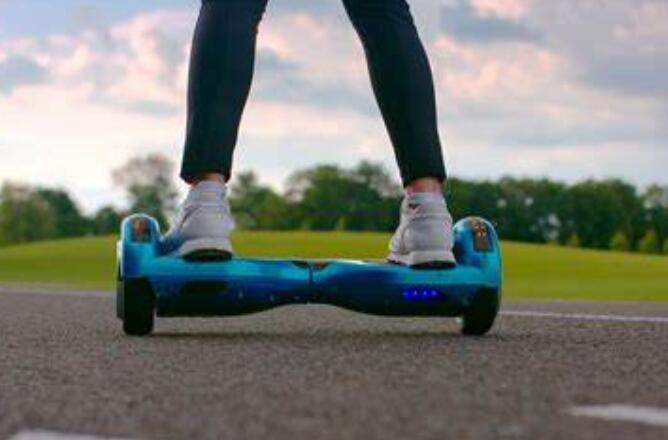
The Evolution of Modern Hoverboard Technology
Since its inception, the hoverboard has undergone a series of transformations. Technological advancements have led to the incorporation of features such as built-in Bluetooth speakers, LED lights for visibility, GPS for location tracking, and stronger batteries for longer rides. Below is a brief timeline showcasing the evolution of hoverboards:
| Year | Model | Notable Features |
|---|---|---|
| 2013 | Hovertrax | The first commercially available hoverboard |
| 2015 | Swagtron T1 | First hoverboard with UL 2272 safety certification |
| 2017 | Segway miniPRO | Introduced knee control bar and mobile app support |
| 2019 | Razor Hovertrax 2.0 | Featured auto self-balancing and EverBalance technology |
| 2021 | Segway Ninebot S | Introduced large air-filled tires for a smoother ride |
Each new model brought improvements and innovations that pushed the boundaries of what was previously thought possible, setting new standards for the industry.
What Does the Future Hold for Hoverboards?
Today’s hoverboards bear little resemblance to those original fire-prone models that took the world by storm. Manufacturing and quality control standards continue to improve. We now see high-end hoverboard brands with strong safety records.
Some futurists envision hoverboards moving beyond recreation to become a practical everyday transportation choice. Engineers are also developing hoverboard go-karts, racing leagues, and other new twists on the concept.
With more technological refinements, hoverboards could potentially find roles in police and military contexts, personal mobility for the disabled population, sports, and more. However risks and challenges remain before such widespread adoption occurs.
One thing is clear – hoverboards are here to stay in some form. These self-balancing scooters have carved out a fun and futuristic niche in the personal transportation landscape. While the technology continues to evolve, their iconic status seems cemented. All aboard!
Ongoing Innovation and Evolution
As hoverboards improved post-2016, where could the technology go next?
- Faster speeds nearing 20-30 mph.
- Longer range up to 30-40 miles per charge.
- Integration with VR/AR for immersive simulated environments.
- Use in extreme sports and racing competitions.
- Utility applications for cargo hauling and transportation.
- Personal mobility devices for improved accessibility.
- Smart city integration for transportation.
Hoverboard tech has come a long way in a decade and will likely continue advancing in surprising directions. Engineers are also tackling other futuristic transport like electric skateboards, jetpacks, and even flying cars. Hoverboards proved such sci-fi tech may be closer than we realize.
Related posts:
 How Much Do Hoverboards Cost? 2024 Prices and Guide
How Much Do Hoverboards Cost? 2024 Prices and Guide 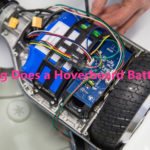 How Long Does a Hoverboard Battery Last? Maximizing Your Ride
How Long Does a Hoverboard Battery Last? Maximizing Your Ride  What Is A Hoverboard – When Was The Hoverboard Invented?
What Is A Hoverboard – When Was The Hoverboard Invented? 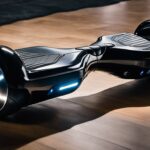 How Much Does Hoverboards Weigh? A Complete Guide
How Much Does Hoverboards Weigh? A Complete Guide  Are Hoverboards Allowed on Airplanes?Know the Policies
Are Hoverboards Allowed on Airplanes?Know the Policies 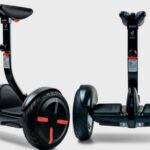 Segway vs Hoverboard: Unveiling the Key Differences
Segway vs Hoverboard: Unveiling the Key Differences
